Introduction
Thermocouples are widely used temperature sensors that operate based on the thermoelectric effect, where a voltage is generated when two dissimilar metals are joined and exposed to a temperature gradient. Due to their reliability, wide temperature range, and rapid response time, thermocouples are extensively used in industrial applications, laboratories, and scientific research. However, different types of thermocouples have distinct properties, making them suitable for specific environments and applications.
This article explores seven common types of thermocouples (K, J, T, E, N, S, and B), detailing their characteristics, advantages, and typical applications.

1. K-Type Thermocouple (Nickel-Chromium / Nickel-Silicon, Ni-Cr/Ni-Si)
Temperature Range: -200°C to 1372°C (-328°F to 2501°F)
Sensitivity: Approximately 41 µV/°C
Features:
Affordable and widely available
Excellent stability and longevity
Performs well in oxidizing and inert atmospheres but degrades in reducing environments
Susceptible to high-temperature drift over extended use
Applications:
Industrial temperature measurement
Metal processing
Gas turbines
Scientific research
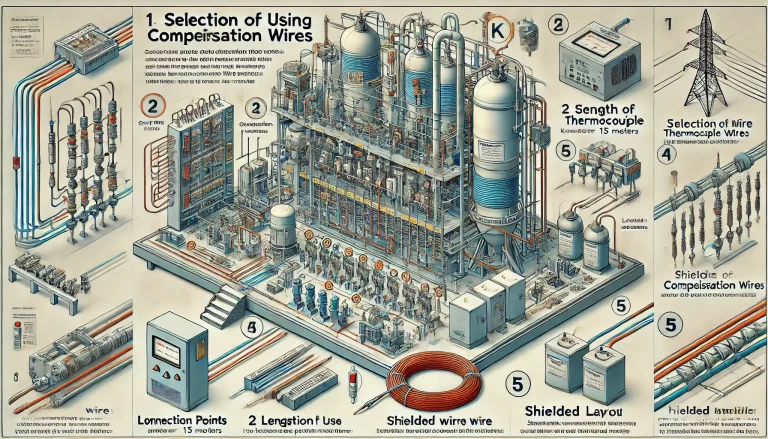
2. J-Type Thermocouple (Iron / Copper-Nickel, Fe/Cu-Ni)
Temperature Range: -210°C to 1200°C (-346°F to 2192°F)
Sensitivity: Approximately 55 µV/°C
Features:
High accuracy in lower temperature applications
Good performance in vacuum, oxidizing, and reducing atmospheres
Prone to oxidation in humid environments, limiting its lifespan
Applications:
Plastic and rubber manufacturing
Food processing
General-purpose industrial heating
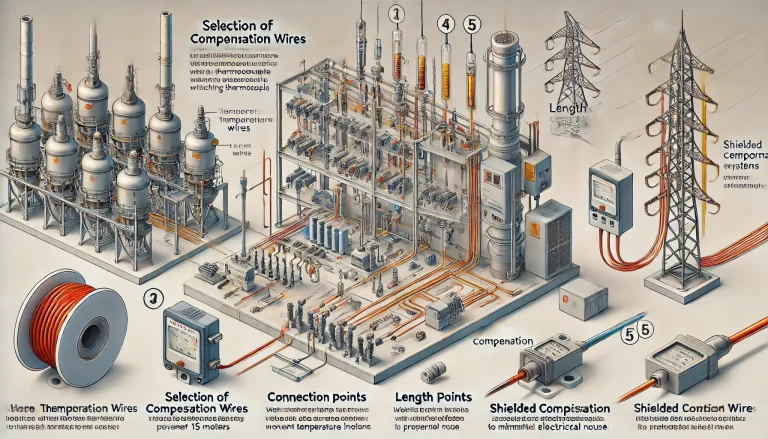
3. T-Type Thermocouple (Copper / Copper-Nickel, Cu/Cu-Ni)
Temperature Range: -200°C to 400°C (-328°F to 752°F)
Sensitivity: Approximately 43 µV/°C
Features:
High accuracy and stability at low temperatures
Excellent corrosion resistance in moist environments
Works well in cryogenic applications
Applications:
Medical and pharmaceutical industries
Refrigeration and cryogenics
Food storage and processing
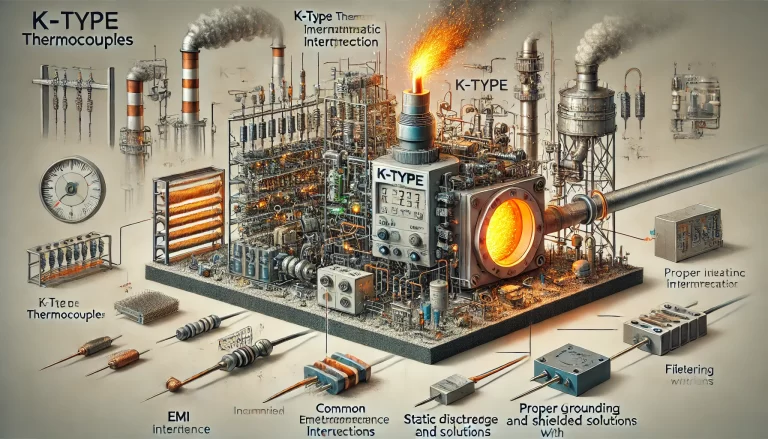
4. E-Type Thermocouple (Nickel-Chromium / Copper-Nickel, Ni-Cr/Cu-Ni)
Temperature Range: -200°C to 1000°C (-328°F to 1832°F)
Sensitivity: Approximately 68 µV/°C (highest among base metal thermocouples)
Features:
High sensitivity and good accuracy
Performs well in low-temperature environments
Strong resistance to oxidation
Applications:
Aerospace and avionics
Industrial and scientific temperature measurement
High-precision laboratory applications
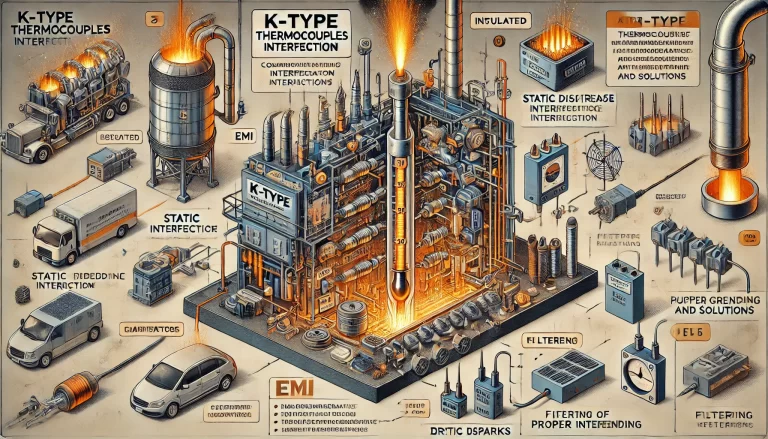
5. N-Type Thermocouple (Nickel-Chromium-Silicon / Nickel-Silicon-Magnesium, Ni-Cr-Si/Ni-Si-Mg)
Temperature Range: -200°C to 1300°C (-328°F to 2372°F)
Sensitivity: Approximately 39 µV/°C
Features:
Enhanced stability and oxidation resistance compared to K-type
Reduced drift over prolonged exposure to high temperatures
Better performance in high-radiation environments
Applications:
Aerospace and nuclear industries
High-temperature research
Industrial furnaces and kilns
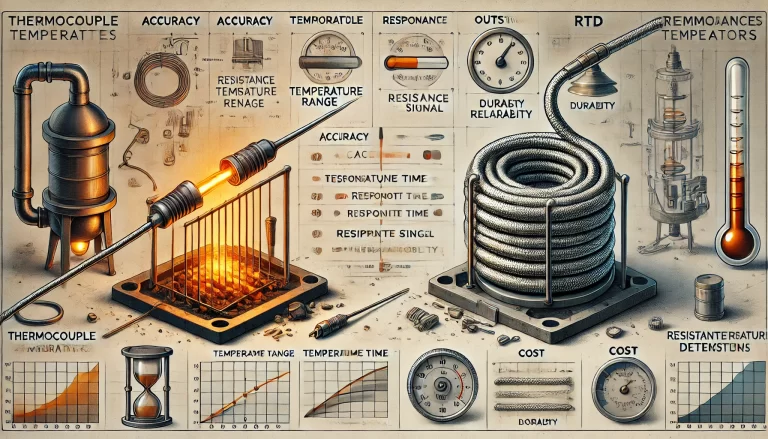
6. S-Type Thermocouple (Platinum-Rhodium 10% / Platinum, Pt-Rh10/Pt)
Temperature Range: 0°C to 1600°C (32°F to 2912°F)
Sensitivity: Approximately 10 µV/°C
Features:
Extremely high accuracy and stability
Expensive due to the use of platinum and rhodium
Performs well in oxidizing atmospheres but degrades in reducing environments
Applications:
Glass and ceramic industries
High-precision metallurgy
Laboratory and scientific research
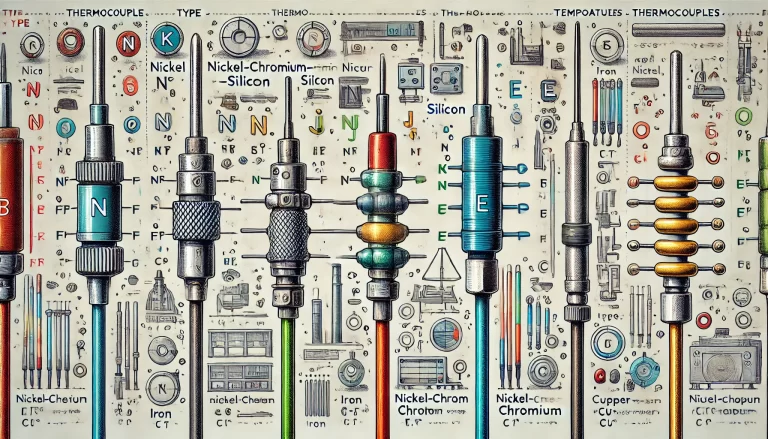
7. B-Type Thermocouple (Platinum-Rhodium 30% / Platinum-Rhodium 6%, Pt-Rh30/Pt-Rh6)
Temperature Range: 600°C to 1800°C (1112°F to 3272°F) (produces minimal voltage below 600°C)
Sensitivity: Approximately 5 µV/°C
Features:
Suitable for extremely high-temperature applications
Very stable at high temperatures with minimal drift
Ineffective for low-temperature measurement due to its low thermoelectric voltage below 600°C
Applications:
High-temperature industrial processes
Glass and steel manufacturing
Kilns and furnaces

Conclusion
Choosing the right thermocouple type depends on several factors, including the required temperature range, sensitivity, stability, and environmental conditions. Base metal thermocouples (K, J, T, E, N) are cost-effective and widely used in industrial and scientific applications, while noble metal thermocouples (S, B) are more expensive but offer superior stability and precision at high temperatures.
Understanding the characteristics of each thermocouple type helps engineers and technicians select the most suitable sensor for their specific applications, ensuring accurate and reliable temperature measurement in various industries.
